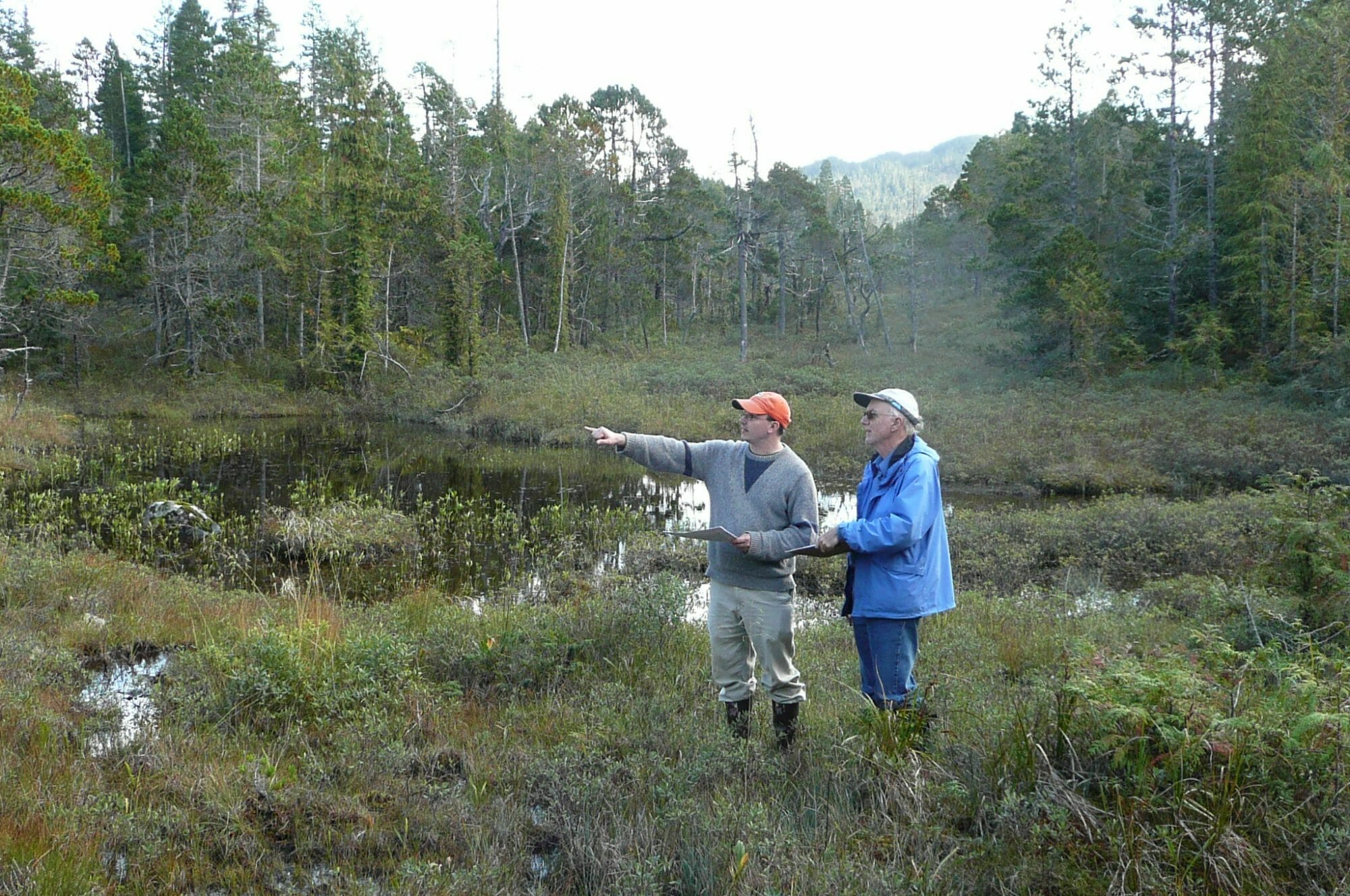Functional Assessment Tools
The Southeast Alaska Land Trust partnered with USFWS, City and Borough of Juneau, the Southeast Alaska Fish Habitat Partnership (SEAKFHP), and many agency and scientific partners to develop and implement the WESPAK-SE and NATAK-SE functional assessment tools. These tools provide agencies, non-governmental organizations, and developers regionally-specific, consistent, and science-based tools for rapidly evaluating the functions and values of wetland (WESPAK-SE) and nearshore (NATAK-SE) sites.
WESPAK-SE and NATAK-SE can be used for landscape assessment, impact analysis, mitigation planning, and conservation actions. These tools are used by trained practitioners to assess impacted aquatic resources and by SEALT as a compensatory mitigation sponsor to assess potential mitigation sites. The output of WESPAK-SE and NATAK-SE is used by trained practitioners to calculate mitigation “debits” for the unavoidable impacts for which mitigation is required, and is used by SEALT to calculate mitigation “credits” to offset those impacts.
Using functional assessment tools helps address the national policy goal of “no net loss” of aquatic resources, as that goal pertains to both acreage and ecosystem services (functions and values) provided by aquatic resources.
Section 404 of the Clean Water Act
SEALT Mitigation
www.southeastalaskalandtrust.org/mitigation
WESPAK-SE / NATAK-SE Information and Training
Contact: info@sealt.org / 907-586-3100

WESPAK-SE
In 2009, at the behest of the U.S. Army Corps of Engineers (USACE) and the Interagency Review Team (IRT), and with funding from the U.S. Fish and Wildlife Service (USFWS), the Southeast Alaska Land Trust hired independent consulting firm CH2M Hill to review and critique 16 wetland rapid assessment methods potentially applicable to Southeast Alaska. The Wetland Ecosystem Services Protocol-US (WESPUS) was selected for adaptation to Southeast Alaska.
In 2011, with support from the USFWS, the Wetland Ecosystem Services Protocol for Southeast Alaska (WESPAK-SE) was initially calibrated with 32 Southeast Alaska wetland sites. SEALT hosted the first classroom training and field trials of the WESPAK-SE protocol in April 2012.
SEALT updated WESPAK-SE in 2013-2015 with funding provided by USFWS Coastal Impact Assistance Program grant, and in coordination with the City and Borough of Juneau (CBJ) as part of the City’s efforts to prepare a wetlands management plan for the Juneau area. During 2013 and 2014, statistically selected tidal wetlands (55 sites) and non-tidal wetlands (119 sites) were assessed to refine the protocol and provide a relative context for interpreting the WESPAK-SE scores.
The WESPAK-SE Manual (v2.0) was finalized in March of 2015. The tidal wetland calculator and non-tidal wetland calculator (both v2.1) were most recently updated in 2022 as a part of the process to modify the SEALT In-Lieu Fee Mitigation Program (link). The design and function of the WESPAK-SE tool has been supported by many talented professionals since 2009, but would not have been possible without the important work of Dr. Paul Adamus. SEALT is grateful to Dr. Adamus for his critical role in the understanding and protection of wetlands in Southeast Alaska.
SEALT collaborated with USFWS, SEAKFHP, and the Southeast Alaska GIS Library at the University of Alaska Southeast to develop an online GIS module to provide public access to wetland and land cover information. Access the module in the WESPAK-SE Files section.
WESPAK-SE Files
A Short Guide to Using WESPAK-SE
WESPAK-SE Manual (v2.0)
WESPAK-SE Manual (v2.0) Appendix F
WESPAK-SE Manual (v2.0) Appendix G
Calculators:
WESPAKse_Tidal_Wetland_Calculator_v2.1_protected
WESPAKse_V2.1_Nontidal_Wetland_Calculator (v2.1)
GIS Module:
Coastal Wetlands (WESPAK) Application
*If you are interested in participating in the Southeast Alaska regional database of WESPAK-SE data, please complete the following steps:
- Go to: https://knb.ecoinformatics.org
- Create an account and log in.
- Click on the “Share” tab at the top of the page.
- Completely fill out the “Upload your data” form. In order for us to be able to keep track of all of the WESPAK-SE data within the KNB repository of scientific data, be sure to include the following:
— Under “Basic Information”, “Data Set Title”, make sure to put WESPAK-SE in the title.
— Under “Keyword”, make sure to add WESPAK-SE as a keyword to your data. - Upload your WESPAK-SE calculator.
- Click “Submit Data Set Description”.
NATAK-SE
The Nearshore Assessment Tool for Southeast Alaska (NATAK-SE) was developed under the same U.S. Fish and Wildlife Service (USFWS) Coastal Impact Assistance Program grant as WESPAK-SE.
In 2014, a draft NATAK-SE protocol was developed. In November 2014, a workshop for scientific review was held to solicit scientific input on the draft NATAK-SE protocol. The workshop included scientists and agency program managers drawn both from government and academia.
In 2015, statistically selected marine or estuarine shore segments (intertidal zone and immediately adjoining upland) were assessed to refine the protocol and provide a relative context for interpreting the NATAK-SE scores. The most recent version of the NATAK-SE calculator (v1.1) is available for use by trained practitioners in the NATEK-SE Files section.
NATAK-SE Files
NATAK-SE Manual (v1.0)
Appendix C
Excel Database (for use in Calculator):
DBpaste
Calculator (v1.0):
NATAKse_Calculator_v1.1_locked
Data Form (v1.0):
Form_NATAK-SE_v1.0
*If you are interested in participating in the Southeast Alaska regional database of NATAK-SE data, please complete the following steps:
- Go to: https://knb.ecoinformatics.org
- Create an account and log in.
- Click on the ‘Share’ tab at the top of the page.
- Completely fill out the ‘Upload your data’ form. In order for us to be able to keep track all of the NATAK-SE data within the KNB repository of scientific data, be sure to include the following:
- Under ‘Basic Information’, ‘*Data Set Title’, make sure to put NATAK-SE in the title.
- Under ‘Keyword’, make sure to add NATAK-SE as a keyword to your data.
- Upload your NATAK-SE Excel calculator.
- Click ‘Submit Data Set Description’.
